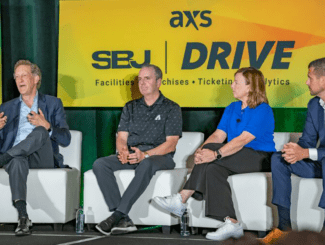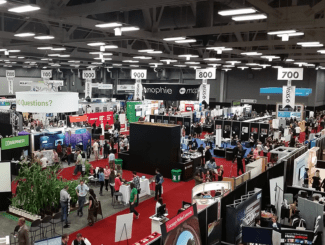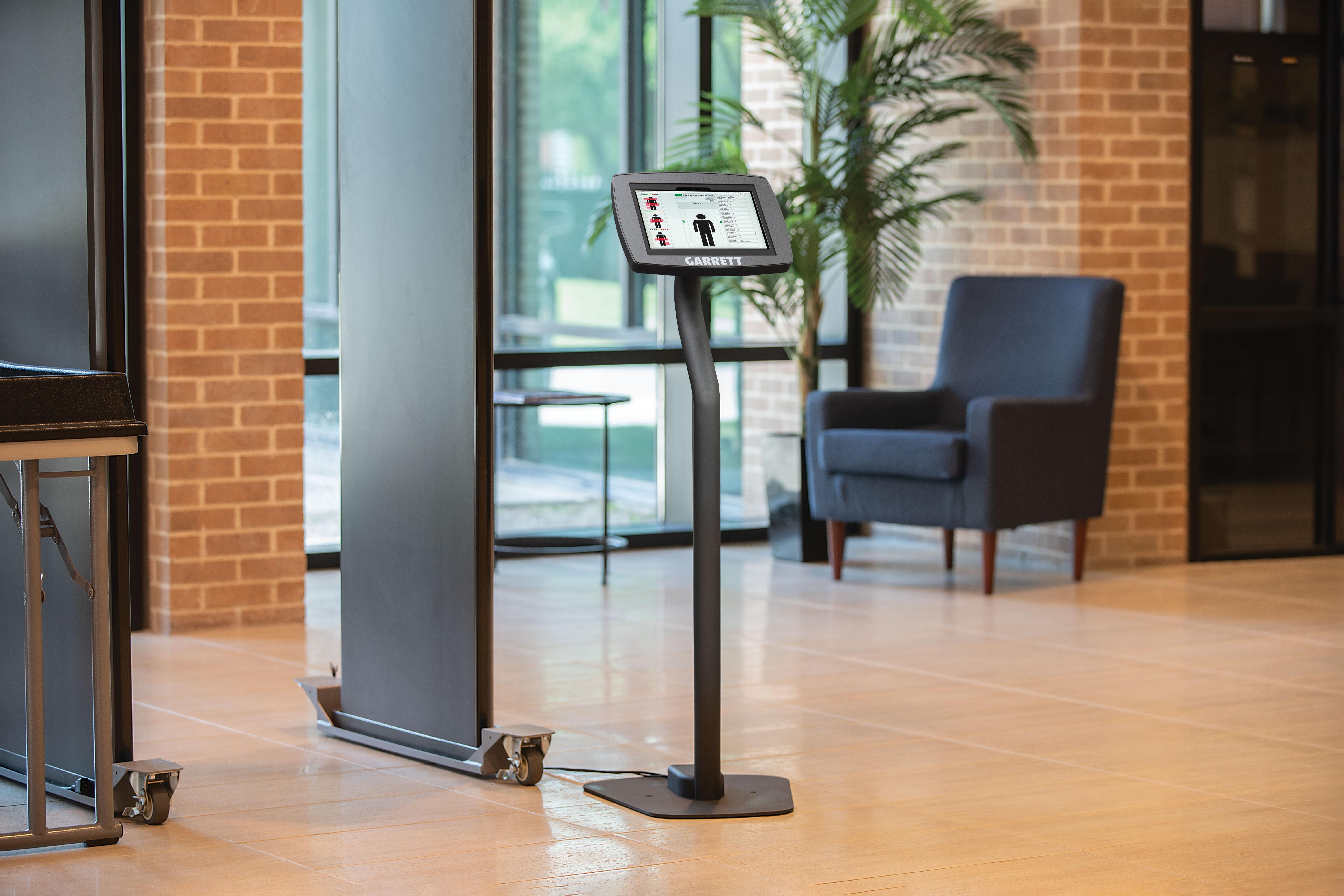
By developing some innovation for the “secondary” part of venue security screening, longtime metal-detector vendor Garrett thinks it has found a way to speed up security processing while retaining a high level of threat detection.
With the introduction of its new SecureFlow Kiosk, the Garland, Texas-based Garrett can now provide security staff with a faster and easier way to determine exactly where a threat might be on a person’s body. The small tablet-sized device, which is mounted on a pedestal, gives security staff a visual location of whatever item might have triggered a positive alarm. With such clear information, security staff can quickly resolve the issue during a secondary scan; and by moving the person to one side for the process, the queue for the main scanning gate can continue uninterrupted.
According to Garrett CEO Steve Novakovich, the addition of the SecureFlow kiosk will allow Garrett systems to improve scanning throughput by as much as 25 percent, a jump that should bring line-times for Garrett systems closer to the newer “walk-through” scanner systems from companies like Evolv or Xtract One. By reaching faster throughput speeds without sacrificing any of its trademark detection attribues, Novakovich said Garrett systems should now be more attractive to venues who want both features without sacrificing one in favor of the other.
Exception processing is the more important part of security
As we noted in our Security Scanners Market Report last year, the revolution in security scanning systems came about partly with a switch to concentrating on exception processing, meaning the actual detection and resolution of a threat. As we said in our report:
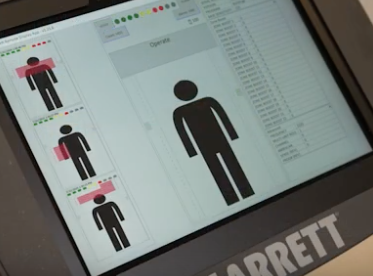
Rather than focus on confirming that there was no threat – which accounted for the vast majority of fans – new systems would focus on finding potential threats and divert them from the stream of patrons for secondary screening. This approach is both more efficient and focused, incenting the screener to find the risk rather than confirm the negative.
With their open-gate architecture and set-aside areas with screens where staffers could more accurately assess the possible location of a threat, the new “walk-through” systems started winning significant market share in stadium deployments, with Evolv Technology securing the leading share of customer wins.
However, as the systems have been deployed more widely, more issues have arisen with a topic our report examined, whether or not the new walk-through technology was sacrificing security in favor of speeding up lines. Last December, the Federal Trade Commission took action against Evolv for its marketing claims, which included the requirement for Evolv to give customers a chance to cancel their contracts.
And while providers will likely continue to stress the features of their main scanning systems, Garrett’s Novakovich said that in the end, “security is only as good as your secondary scan — because secondary catches whatever was detected.”
Making detected threats easier to find
With its 66 specific zones of security scanning, Garrett’s Paragon systems are among the most thorough of systems used at sports venues. But the Paragon’s traditional metal detector form factor retains some of the pain points of the past, with single-file lines that could get stopped whenever a possible threat was detected.
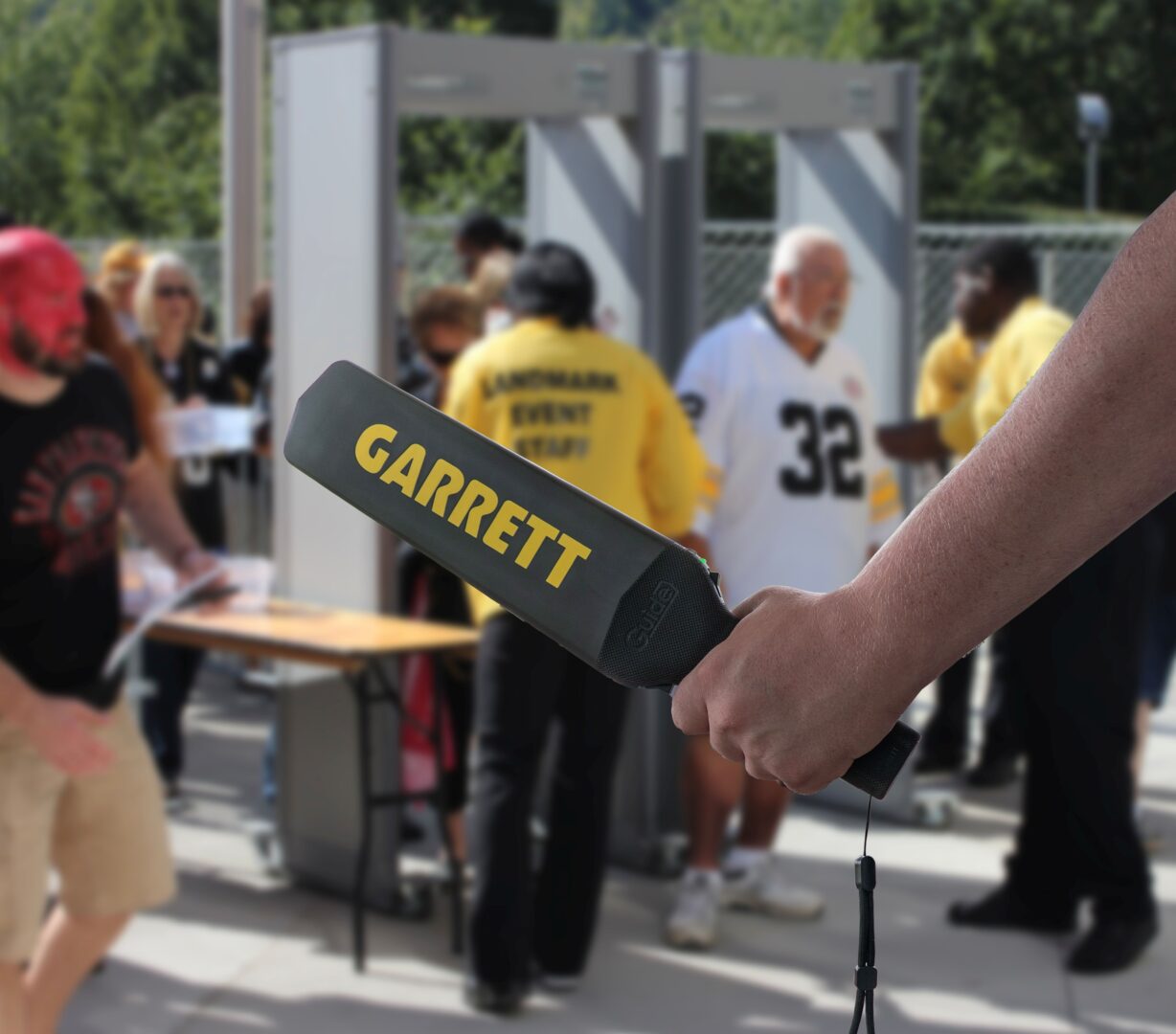
In an earlier response to the walk-through systems’ popularity, Garrett added a new software upgrade option for its older PD 6500i metal detectors (the same software is standard on newer Paragon systems) that would allow people to walk through the devices without having to divest phones or keys, which could theoretically speed up flow for the traditional systems. But the traditional single-file line could still cause backups.
Now, with SecureFlow, Garrett systems can be set up more like a walkthrough system, with a dedicated staffer watching a screen and ready to perform a secondary scan. Though the Paragon systems have had LED lights up and down the back sides of the gates showing where a threat might be, Novakovich said that having a visual screen relieves a Paragon system staffer from trying to remember which LED lights were flashing when a person walked through the gates.
“Relying on the screener to put all the information together [from looking at the LED lights] is a tough task,” Novakovich said. The systems from Evolv and other providers like Xtract One already include similar screens for staffers to see the possible location of a threat, some using overlays on videos of the people walking through the gates.
By adding a physical-space buffer off to the side for secondary scanning, Garrett system staffers can also utilize the latest version of Garrett’s market-leading handheld scanner to determine what the final resolution may be.
“We’re very confident in our ability to speed up the entire process,” Novakovich said. “When a person steps aside, they’re out of the flow. Then, the screener knows where to check, and does so with the best handheld in the business. It’s the best security solution, while keeping high throughput.”
According to Garrett, the SecureFlow system currently works with one kiosk needed per scanning gate, which it attaches to via an Ethernet connection. Pricing for the SecureFlow kiosk is $2,400, according to Novakovich. The SecureFlow system is currently in trial tests with a small group of potential customers, including one venue deployment, Novakovich said.




